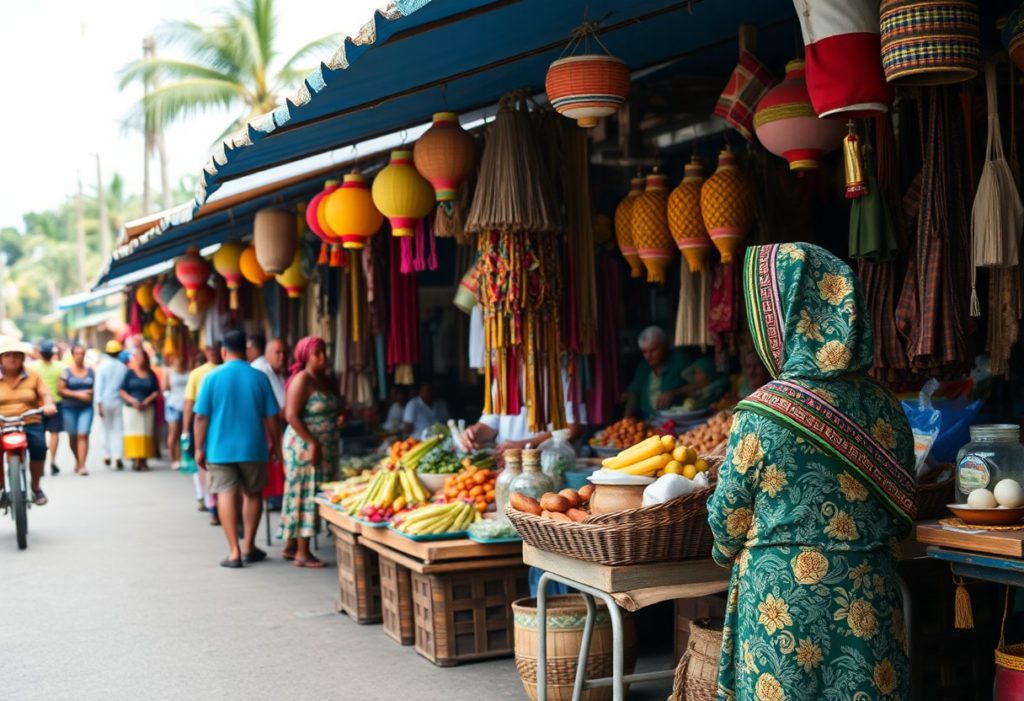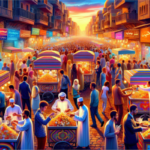Welcome to the enchanting realm of Belize, a nation celebrated for its rich cultural diversity and vibrant historical narrative. Here, you will discover a remarkable blend of ethnic groups coexisting in harmony, creating a unique societal tapestry. This Central American treasure showcases a captivating mix of Creole, Garifuna, Maya, Mestizo, and other communities, each enriching the cultural fabric of the nation. As you immerse yourself in Belize's historical narrative, it becomes evident that its multicultural identity serves as a powerful testament to peaceful coexistence and the celebration of diversity. Every ethnic group contributes its own traditions, languages, and cultural practices, resulting in a dynamic society that not only embraces differences but also fosters a profound sense of national unity, making Belize an extraordinary destination for exploring intricate cultural interactions.
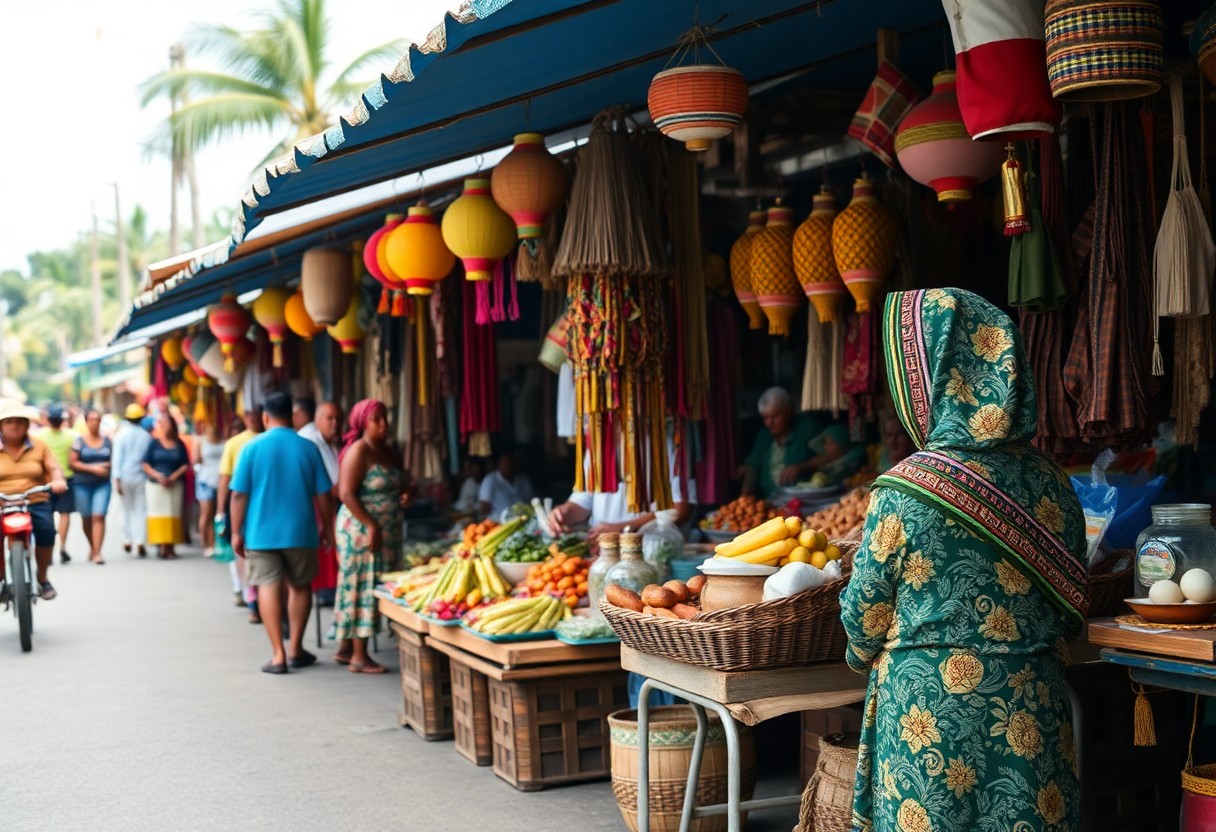 Now, let's take a deeper look into Belize’s rich ethnic diversity:
Now, let's take a deeper look into Belize’s rich ethnic diversity:
Discover the Major Ethnic Groups Enriching Belize’s Cultural Landscape
The vibrant and fascinating population of Belize is characterized by numerous distinct ethnic groups, each contributing uniquely to the country's colorful cultural landscape. This remarkable diversity reflects historical migrations, colonial influences, and enduring indigenous roots. Belize's multicultural composition stands out as one of the most ethnically intricate societies in Central America, offering a unique opportunity for you to observe the intricate dynamics of human migration and cultural integration.
Delve into the Mestizo Community’s Influence on Belize
Understanding the demographic landscape of Belize begins with recognizing the significance of the Mestizo community, which represents the largest ethnic group, accounting for approximately 50% of the total population. This community primarily descends from a blend of Spanish and Indigenous Mexican heritage, predominantly inhabiting the northern and western regions of Belize. Their rich cultural traditions, agricultural practices, and community values have significantly influenced the nation’s cultural identity and economic landscape, making them pivotal to Belize's development.
Uncovering the Rich Heritage and Influence of the Creole Community
At the heart of Belize’s cultural identity lies the Creole community, which constitutes roughly 25% of the population. Descendants of African slaves and British colonizers, the Creoles primarily reside in urban areas, particularly in Belize City, where their unique linguistic and cultural fusion flourishes. Beyond mere demographics, Creole culture is deeply woven into the fabric of Belizean music, language, and social customs. Their distinctive Kriol language serves as a vital means of communication and a powerful symbol of cultural resilience, adaptation, and pride that encapsulates their rich heritage.
Exploring the Enduring Legacy of the Maya Communities in Belize
The Maya communities represent an indigenous population with profound historical roots in the region, accounting for approximately 11% of Belize’s overall population. Primarily located in the southern districts, they maintain strong ties to traditional practices that have been passed down through generations. The Maya culture is not merely a historical reference; it is an active tradition that manifests in their agricultural practices, spiritual ceremonies, and intricate handicrafts. Their unwavering commitment to preserving ancient languages and customs provides an essential link to pre-Columbian civilizations, showcasing their enduring cultural legacy.
Understanding the Unique Afro-Indigenous Heritage of the Garifuna Community
The Garifuna people, an Afro-Indigenous group with a rich and storied history, make up approximately 6% of Belize’s population. Their roots trace back to Caribbean islands, representing a unique blend of African and Indigenous Caribbean ancestry. The vibrant cultural heritage of the Garifuna is evident in their distinctive music, dance, and linguistic traditions. Their culture is recognized by UNESCO for its extraordinary resilience and cultural significance, with substantial populations settled along Belize’s southern coastal regions, contributing to the nation’s cultural diversity.
The Mennonite Community’s Impact on Belize’s Agricultural Practices
Comprising less than 5% of the population, the Mennonites represent a unique agricultural community in Belize. They adhere to traditional European farming practices that have significantly bolstered the country’s agricultural productivity. This community exemplifies remarkable cultural and economic integration, with successful Mennonite settlements, particularly in areas like Spanish Lookout, where they employ highly efficient and sustainable farming techniques, underscoring their vital role in driving Belize’s economy forward.
Next, let's explore the historical factors that have shaped Belize’s ethnic origins and influences:
Examining the Historical Influences Shaping Belize’s Ethnic Composition
A thorough understanding of Belize’s ethnic landscape begins with its intricate historical narrative. You will uncover a rich blend of indigenous Maya heritage, European colonization, descendants of African slaves, and subsequent waves of immigrant groups that collectively shaped the nation’s diverse cultural identity. The convergence of these varied populations has created a unique societal framework where multiple ethnicities coexist and flourish, resulting in a remarkable multicultural mosaic that defines the social dynamics of Belize.
Understanding the Impact of Slavery on Belize’s Ethnic Diversity
To fully grasp Belize’s ethnic composition, it is essential to acknowledge the profound impact of slavery. During the colonial period, African slaves were forcibly brought to work in the mahogany and logwood industries, fundamentally altering the demographic landscape of the nation. Their resilience, cultural contributions, and community-building efforts laid the groundwork for Belize’s social and economic development, establishing foundational communities that evolved into the vibrant Creole and Garifuna populations recognized today.
The Role of Migration and Refugee Movements in Shaping Belize’s Diversity
Migration patterns have played a significant role in shaping the ethnic diversity of Belize. Over the years, consecutive waves of immigrants from neighboring countries such as Guatemala, Honduras, and El Salvador have continuously reshaped the national demographic profile. You will notice how these migrations have introduced new cultural elements, languages, and traditions that enrich the multicultural environment of Belize. For instance, the influx of Guatemalan and Salvadoran refugees during regional conflicts in the 1980s brought complex narratives of displacement and survival, leading many to settle in border regions and create dynamic transnational spaces where cultural boundaries blur and new identities emerge.
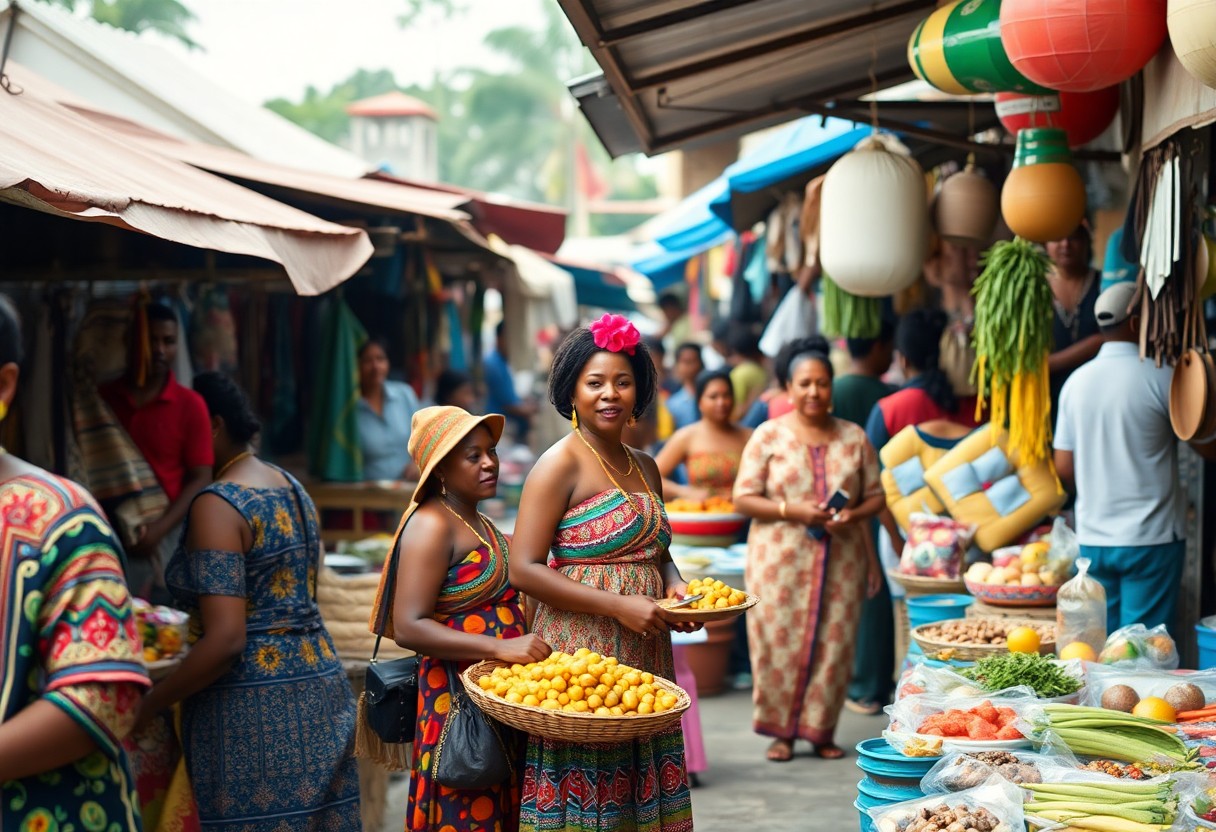 Now, let’s explore the vibrant cultural celebrations that reflect Belize’s ethnic diversity:
Now, let’s explore the vibrant cultural celebrations that reflect Belize’s ethnic diversity:
Immerse Yourself in the Vibrant Cultural Celebrations of Belize
Belize’s cultural celebrations are a vivid and colorful display of its rich multicultural tapestry, showcasing the unique traditions brought forth by each ethnic group. These festivals transform into breathtaking celebrations of heritage, allowing you to experience extraordinary events such as Garifuna Settlement Day, which highlights indigenous pride, and the lively San Pedro Carnival, where communities come together in joyous festivities. These celebrations not only serve as entertainment but also act as powerful expressions of national identity and historical resilience, bringing people together in a shared cultural experience.
Celebrating Linguistic Diversity Across Belize’s Communities
Belize boasts an impressive linguistic diversity, with multiple languages spoken throughout its communities. While English remains the official language, you will also encounter Kriol, Spanish, Garifuna, and various Mayan languages. This rich linguistic variety reflects the cultural interconnectedness and historical migrations that have shaped the nation, creating a unique communicative landscape that embodies the complexity of Belize’s social fabric and highlights the importance of language in cultural identity.
Exploring Belize’s Rich Musical Heritage
For the people of Belize, music serves as a profound cultural expression that transcends mere entertainment. Here, you will discover rhythmic traditions that blend African, Caribbean, and Latin American influences, with genres such as Punta, Brukdown, and Reggae prominently featured in the musical landscape. Belize’s musical heritage is deeply rooted in historical migrations and cultural exchanges, with Garifuna drumming being particularly significant, connecting contemporary artists with ancestral rhythms. Each musical style you encounter carries profound social and emotional significance, serving as a living archive of community experiences and collective memory.
The Art of Dance as a Medium of Cultural Expression
In Belize, dance performances represent a captivating form of dynamic cultural storytelling. You will witness traditional movements that preserve historical narratives while celebrating community identities. From the rhythmic ceremonial dances of the Garifuna to the vibrant folk performances of the Mestizo people, these artistic expressions offer intimate insights into the multicultural essence of Belize. The importance of dance extends beyond performance; ceremonial movements often connect spiritual practices with historical migrations, illustrating how dance serves as a powerful medium for cultural preservation. Each dance style communicates complex social histories, embodying themes of resilience, resistance, and collective memory through meticulously choreographed movements.
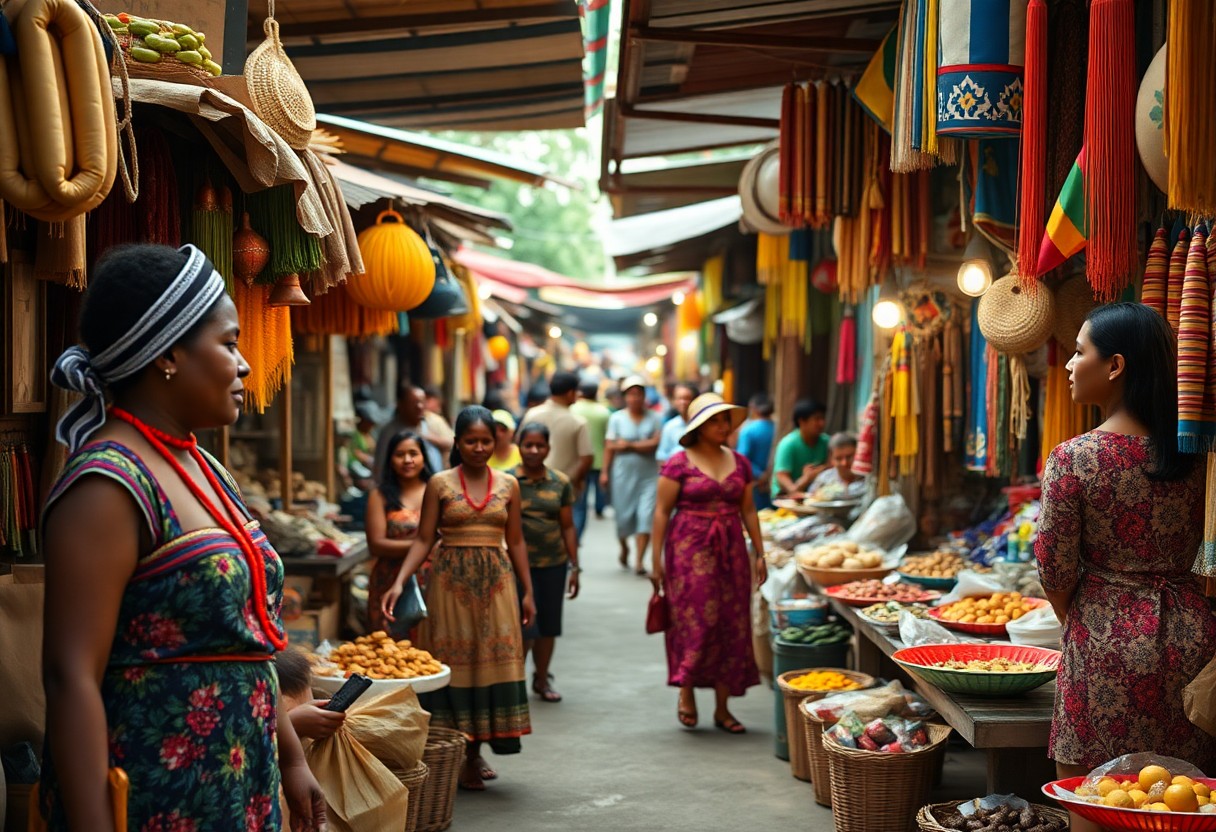
Addressing Challenges and Promoting Integration in Belize’s Multicultural Society
As Belize’s multicultural society continues to thrive, it faces complex social dynamics that require careful navigation. You’ll find that ethnic tensions and historical disparities are ongoing challenges that hinder full social integration. Diverse groups within the nation encounter systemic barriers in education, employment, and political representation, necessitating sustained efforts to address these pressing issues. Intercultural dialogue and effective policy interventions are vital in bridging cultural divides and fostering mutual understanding among Belize’s varied ethnic communities, ensuring a harmonious coexistence.
Investigating Socioeconomic Disparities Among Belize’s Ethnic Groups
In the aftermath of independence, Belize’s economic landscape revealed significant disparities between ethnic groups. You will observe that Creole, Garifuna, and Maya populations frequently face higher rates of poverty and limited economic opportunities compared to other communities. These socioeconomic challenges are deeply rooted in historical inequalities, highlighting the urgent need for targeted economic empowerment strategies that promote equitable development across all ethnic groups, fostering a more inclusive society.
Fostering Unity in Diversity Across Belize
Above all, Belize exemplifies remarkable potential for achieving cultural harmony. Despite their differences, communities share a collective national identity that transcends ethnic boundaries. Intermarriage, shared cultural events, and collaborative social initiatives contribute to a growing sense of national unity. With immense resilience, Belize continues to craft a unique national narrative that celebrates its multicultural heritage. You will witness how various ethnic groups contribute to a vibrant social tapestry, creating innovative cultural expressions that blend diverse traditions. The nation’s commitment to peaceful coexistence serves as a powerful example of cultural integration, where diversity is embraced as a fundamental strength of Belizean society.
Reflecting on the Rich Cultural Diversity of Belize
In your exploration of Belize’s rich ethnic landscape, you have witnessed how the Maya, Garifuna, Creole, Mestizo, and other communities have woven their unique cultural threads into a vibrant national fabric. Belize stands as a remarkable testament to harmonious multicultural coexistence, with diverse traditions, languages, and histories blending seamlessly. Your journey through this small Central American nation reveals a society that not only celebrates its differences but also upholds a strong sense of shared national identity. Gaining insight into Belize’s ethnic heritage allows you to appreciate the depth and complexity of its social dynamics, demonstrating how cultural diversity can serve as a source of strength and unity.
Your Frequently Asked Questions about Belize’s Ethnic Diversity
Q: Which ethnic groups shape Belize’s unique cultural identity?
A: Belize is a melting pot of ethnic groups, including Mestizos (around 52% of the population), Creoles (approximately 25%), Maya (indigenous groups like Kekchi and Mopan), Garifuna, along with smaller communities of East Indians, Chinese, and Mennonites. Each group contributes distinct cultural traditions, languages, and historical narratives that collectively shape Belize’s vibrant multicultural identity, making it a truly diverse nation.
Q: How do different ethnic communities coexist and interact in Belize?
A: Belize exemplifies a model of peaceful ethnic integration, where communities maintain their unique cultural practices while sharing a cohesive national identity. Intermarriage is common, linguistic diversity is celebrated, and various cultural festivals provide a platform to showcase the country’s rich heritage. Shared experiences from colonial history and national development have fostered mutual respect and understanding among the different ethnic groups, enhancing social cohesion.
Q: What historical events have influenced the multicultural development of Belize?
A: The multicultural society of Belize emerged from a series of complex historical processes, including encounters with Spanish colonizers, British colonial administration, African slavery, indigenous resistance, and subsequent waves of migration. Belize’s geographical position as a crossroads between the Caribbean and Central America facilitated cultural exchanges, while policies promoting tolerance and integration have supported the establishment of a harmonious multiethnic national framework.
The article Unpacking Belize’s Diverse Ethnic Heritage and Multicultural Society first appeared on Belize Travel Guide.
The Article Belize’s Ethnic Heritage: A Look at Its Multicultural Society Was Found On https://limitsofstrategy.com
